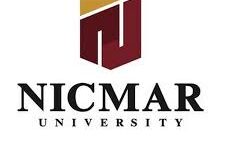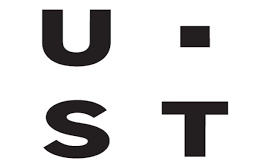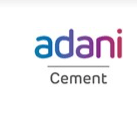Click here to access detailed report
Robust industry revenue growth driven by tariff hikes
India’s telecom industry revenue (AGR including NLD) increased 8% QoQ to INR674b (+13% YoY) in 2QFY25, mainly driven by the flow-through of tariff hikes. The implied industry ARPU was up 9% QoQ to INR194/month, while industry subscriber base declined ~17m (~1.5%) QoQ. India’s telecom spends as a % of nominal GDP inched up to ~0.9% in 2Q (vs. 0.8% in 1Q), but still remained significantly below ~1.4% of GDP prior to the RJio launch. Bharti remained the biggest beneficiary of the tariff hike, with ~49% QoQ incremental RMS (vs. ~39% overall RMS) in 2QFY25. We expect industry revenue growth to remain robust in the near term as full benefits of the tariff hike is realized over the next two quarters as subscriber churn subsides.
Bharti remains the biggest beneficiary of the tariff hike with ~49% incremental RMS
Bharti continued to grow ahead of its peers in 2QFY25, with AGR (including NLD) rising ~11% QoQ to INR260b (+19% YoY), as implied ARPU inched up to INR224 (+11% QoQ). Bharti’s QoQ incremental RMS in 2QFY25 was robust at ~49% (vs. ~39% overall RMS). RJio’s AGR (inc. NLD) grew ~7% QoQ to INR280b (+14% YoY) as implied ARPU improved ~7% QoQ to INR199. Vi continued to lag peers as the 7% QoQ implied ARPU uptick was offset by a decline in subscribers, resulting in ~5% QoQ revenue growth to INR97b. Driven by subscriber share gains and ~6% QoQ implied ARPU uptick, revenue for others (primarily BSNL) inched up ~8% QoQ (+7% YoY) to INR38b in 2Q.
A and B circles drive industry growth, while Metros and C circles lag
The decline in the overall subscriber base was largely similar across circle categories at ~1.3-1.6% QoQ. However, tariff hike flow-through has been the highest in Circles A and B with 9-10% ARPU uptick, while Metros and C Circles lagged with ~7% QoQ ARPU growth. As a result, Circles A and B led with ~10%/8% revenue uptick in 2QFY25, while Metros and C Circles recorded lower ~7% QoQ revenue growth. Bharti was the biggest gainer across A, B and C category circles, while Vi led with ~14% QoQ revenue growth in Metros.
Industry revenue doubled since Sep’19 on three rounds of tariff hikes
Since Sep’19 (quarter preceding the first tariff hike), the telecom industry’s ARPU has almost doubled from INR98 in Sep’19 to INR193 in Sep’24, driven by tariff hikes. However, as a result of sharp tariff hikes (~15% industry ARPU CAGR over the last five years), the industry’s subscriber base at 1.15t in Sep’24 is even lower than Sep’19 levels (1.17t). Further, adjusting for the growth in M2M/IoT SIMs, the decline in industry subscriber base would have been even higher. Driven by three rounds of smartphone tariff hikes (Dec’19, Dec’21, and Jul’24), India’s quarterly telecom revenue has almost doubled (up 96%) since Sep’19, implying ~14% five-year industry revenue CAGR.
Bharti and RJio account for ~97% of incremental revenue since Sep’19
Among telcos, Bharti has been the biggest beneficiary of tariff hikes with a 2.2x increase in implied ARPU over Sep’19-Sep’24, implying a ~17% five-year CAGR, followed by ~13%/12% CAGR for RJio/Vi. We believe the significant improvement in the data subs proportion has also been a key driver for Bharti’s industry-leading ARPU.
Over Sep’19-Sep’24, Bharti’s revenue has increased ~2.6x, implying ~21% five-year revenue CAGR, with incremental revenue market share significantly higher at ~48% (vs. ~39% RMS in 2Q). Similarly, RJio’s incremental RMS over the last five years also stood at healthy ~49% (vs. ~42% RMS in 2Q), driving ~2.4x increase in revenue since Sep’19 (~19% five-year CAGR). Comparatively, Vi accounted for modest ~2% incremental RMS over Sep’19-Sep’24 as its revenue inched up by modest INR6b (~7%) since Sep’19, with subscriber churn offsetting the tariff hike benefits.
Valuation and view
The pass-through of Jul’24 tariff hikes has been encouraging and the full benefits are likely to reflect by Mar’25 as the impact of subscriber churn subsides over the next few months.
Given the consolidated market structure in the Indian telecom industry, higher data consumption, lower ARPU, and inadequate returns generated by telcos, we expect tariff hikes to be more frequent. We build in ~15% tariff hike in Dec’25.
With Vi’s large capex plans, we believe the pace of market share gains may slow down. However, RJio and Bharti are still likely to continue gaining market share at Vi’s expense, in our view. We continue to prefer Bharti and RIL in the telecom space.
 Newspatrolling.com News cum Content Syndication Portal Online
Newspatrolling.com News cum Content Syndication Portal Online







